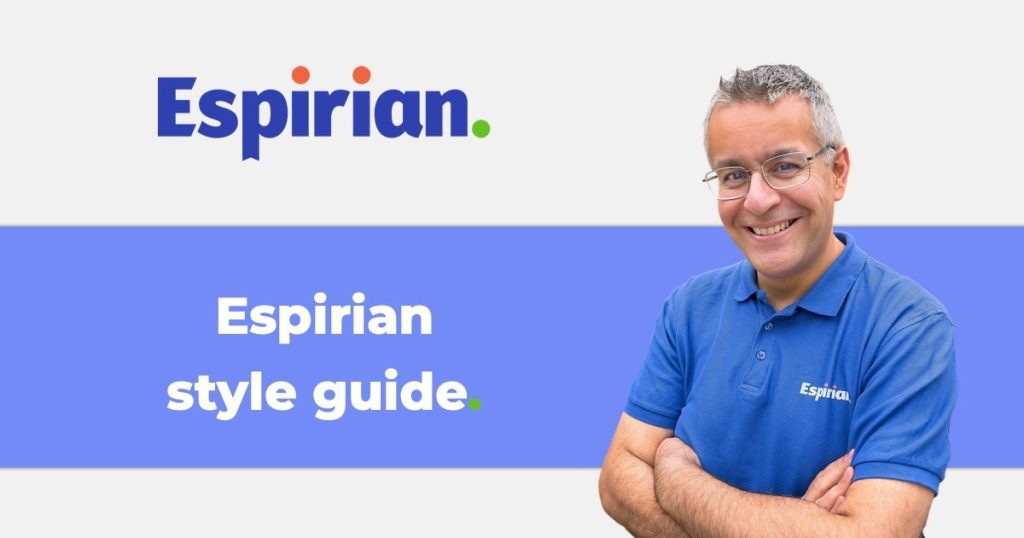Preferences for how I write my own stuff.
When I write content for my B2B clients, I usually create a style sheet. It’s a Word document I use to record the style preferences that I need to apply to the text I write and edit.
I have a style sheet for my own writing. Here it is.
- Introduction
- Spellings
- –is– and –iz– words
- Headings and subheadings
- Numbers
- Dashes
- Commas in numbers
- Lists
- Quotations
- Units
- Dates and times
- Forms of address
- Initialisms and acronyms
- Contractions
- Emojis
- Hashtags
- Related resources
- Let’s wrap up
Introduction.
Style sheets help me ensure consistency throughout my professional writing projects.
They also help my clients after the project, because those clients have a set of guidelines to distribute to their teams, ensuring consistency of any in-house content creation or editing.
So, what goes into a style sheet? Does the client prefer to write organisation or organization?
Some clients don’t have strong views on such matters – they just want their text to be clear and accurate.
In those cases, I use my own preferences to write their text. This page sets out those preferences in what I’m calling the Espirian style guide.
I don’t believe in hiding these things, so here it all is laid bare. If you’re a writer, marketer or anyone else working with words, feel free to adapt this content for your own ends.
Spellings.
I use UK English spellings.
Example.
colour, practise (verb), aluminium
–is– and –iz– words.
I use –is– form in words that can be spelt either way. The same goes for –ys– form.
Example.
organisation, analyse
Bodies such as the World Health Organization have proper names, and we should honour those spellings even if they go against our usual style.
So, even though I use –is– form in my general writing, I would still write Organization in this case.
I’ve made a separate section for this decision because this choice is not quite the same as my decision to use UK English.
Some people wrongly believe that –is– form is British whereas –iz– form is American. In fact, Oxford University Press (OUP – a British institution) uses –iz– form.
Headings and subheadings.
I use sentence case in my headings and subheadings. This means that only the first word of the heading or subheading is capitalised. Proper names need to be capitalised as well.
Example.
How to hire a technical copywriter
Why Apple computers are best
Numbers.
I write numbers as numerals rather than spelling them out.
Exceptions are when different types of thing fall close together and each need to be numbered.
Example.
There were four 12-year-old children in the room.
OR
There were 4 twelve-year-old children in the room.
(Writing “4 12-year-old children” might look confusing.)
When writing large numbers, I prefer to mix numerals and words.
Example.
In June 2020, LinkedIn had 690 million members.
Dashes.
Most of us are familiar with hyphens but there are times where we need to use dashes, which are longer horizontally.
Dashes are used to indicate ranges in numbers and dates.
Here they are the dashes compared with the hyphen, in vertical order so you can see the differences:
| Type | Name |
|---|---|
| - | Hyphen (short) |
| – | En dash (longer) |
| — | Em dash (longest) |
Commas in numbers.
I don’t use commas in 4-digit numbers.
Example.
1234
I do use commas in 5-digit numbers (and beyond).
Example.
12,345
Lists.
Whenever possible, I write lists in vertical form, with bullets. I find these far easier to read than inline lists, especially when there are a lot of items. They’re also good for breaking up content so that it looks less like a wall of text.
If each list item needs explanation, I use a colon to separate the text. I usually set the first part of each list item in bold, and end the list item with a full stop. The text after the colon always starts in lowercase.
I don’t use a full stop if each list item is very short.
Example.
- LinkedIn: the world’s largest professional network.
- Facebook: the most popular social media platform.
- Twitter: the place for breaking news and angry shouting.
For inline lists, I don’t use the Oxford comma. This is when a comma is added before the final item even when one isn’t needed for clarity.
Example.
apples, bananas and oranges
NOT apples, bananas, and oranges
I do use a clarifying comma when one is needed.
In the following example, the second comma clarifies that there are 3 flavours and that the final flavour is a pairing.
Example.
Flavours I like: chocolate, strawberry, and raspberry and lemon.
Sometimes, it’s useful to use an ampersand (&) to indicate pairing, but I prefer to write such things in vertical lists.
Example.
Flavours I like:
- chocolate
- strawberry
- raspberry and lemon
Quotations.
I use straight double quotes with straight single quotes inside them when needed.
Example.
"This is a quote."
"This is a 'nested' quote."
Units.
I don’t use a space between numbers and units.
I use forward slashes and superscripts where necessary.
Example.
23m/s2
140kg
31ºC
Dates and times.
I use the UK English style of writing dates, without a comma after the day of the week.
Example.
Tuesday 7 July 2020
I don’t use ordinals (1st, 2nd, 3rd, 4th, etc.) on the day of the month unless it’s being referred to in isolation.
Example.
We’ll meet on the 7th.
I use unspaced lowercase indicators for times of day.
Example.
10am to 4pm
Forms of address.
I use a full stop after a form of address only if the last letter of the abbreviation doesn’t match the last letter of the full word.
Example.
- Mr (mister)
- Mrs (missus)
- Dr (doctor)
- St (saint)
- Rev. (reverend)
- Prof. (professor)
Here’s my special way of remembering when to use a full stop when abbreviating “street” and “saint”.
- ? Streets are full of litter ➡️ . ⬅️
- ? Saints are spotless ➡️ ⬅️
So, that’s St. for “street” and St for “saint”.
Initialisms and acronyms.
An initialism is a group of letters that represent the name of an organisation or some other thing, e.g. BBC = British Broadcasting Corporation.
An acronym is an initialism that is pronounced as a word rather than as the individual letters, e.g. NASA = National Aeronautics and Space Administration (no one says “enn-ayy-ess-ayy”).
I don’t use full stops between the letters of acronyms and initialisms.
I add a lowercase “s” when pluralising acronyms and initialisms.
Example.
I help SMEs to make their content more engaging and human.
Contractions.
I use contractions because I want to write the way I speak.
Example.
It’s OK to use contractions in your writing.
Trust me: you won’t sound unprofessional.
Emojis.
Some people hate emojis and think they look unprofessional. Not me. If I end a statement with an emoji, that means I won’t use a full stop.
Example.
I quite like using emojis in my content ?
You can insert emojis in almost any text field via these keyboard combos:
- On macOS:
Ctrl-Cmd-Space - On Windows:
Windows-.

Hashtags.
I write hashtags with an initial capital letter and I capitalise each word inside the hashtag, to aid readability and make it easier for screen readers to scan the hashtag.
Example.
#LinkedInLearnerLounge
#NoPainerExplainer
#ContentDNA
Internal capitals in a phrase are referred to as CamelCase, because the capitals look like the humps of a camel.

Related resources.
I have a couple of other pages about how I style things:
Let’s wrap up.
Remember that these are my style conventions for writing. When we work together, you can choose any style that suits you.


